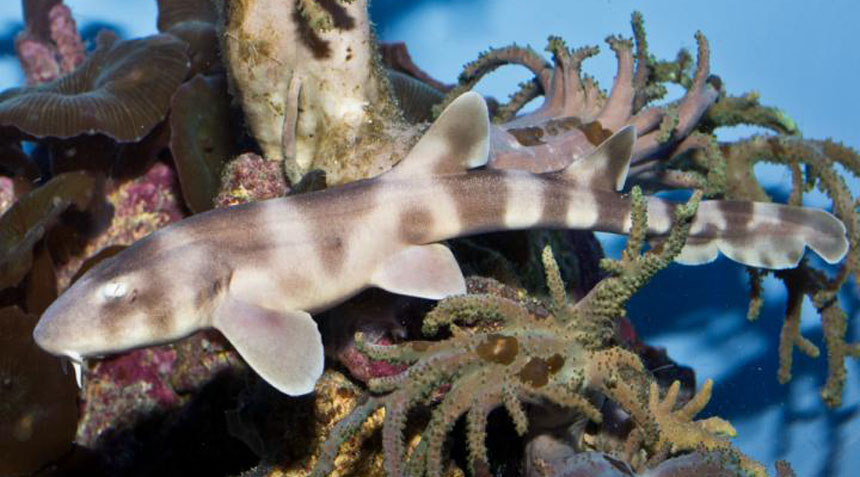Paternity test reveals father’s role in mystery shark birth

This brownbanded bamboo shark was born in a tank containing three adult female sharks — and no males. A genetic study showed that the pup does have a dad, though. Mom stored his sperm for years.
California Academy of Sciences
- More than 2 years ago
In January 2012, curators at the Steinhart Aquarium of the California Academy of Sciences got a surprise — the birth of a brownbanded bamboo shark in a tank that had no potential dads, only three possible moms. How did that happen? Moisés A. Bernal and other Academy scientists wanted to find out, so they began teasing out the female sharks’ history to figure out how the baby shark came to be. The results of their investigation were published December 28 in the Journal of Fish Biology.
The Steinhart Aquarium in San Francisco acquired the three female brownbanded bamboo sharks in September 2007 from the Aquarium of the Pacific in Long Beach, Calif., where they had been kept with males of their species. For a year, the females lived in a temporary facility and produced eggs that were discarded. Then the three females were moved to new facilities at Golden Gate Park where their tankmates were female blacktip reef sharks and a lone male Javanese cownose ray. The brownbanded bamboo sharks again laid eggs and curators collected the egg cases in January 2011. In November, two of those egg cases showed signs of embryonic development. One hatched on January 21, 2012.
The researchers considered three potential scenarios for how this shark pup came to be: The shark was the result of a hybridization between one of the females and that lone Javanese cownose ray; the pup resulted from parthenogenesis — a type of reproduction in which offspring develops from an unfertilized egg; or mama shark stored dad’s sperm for a really, really long time.
The first option was dismissed outright — the two species are so distant that hybridization would be improbable, the scientists concluded. But the other two, they decided, were worthy of consideration. Parthenogenesis had been documented in a closely related species, the whitespotted bamboo shark. And several shark species are known to store sperm for periods of months to years. The strategy lets a female successfully mate even when her body isn’t yet ovulating and ready to start reproducing.
The team didn’t know which of the three female sharks had laid the egg, though, so they compared DNA markers from the pup and its three possible mothers. The analysis revealed that the pup was most closely related to a shark labeled “Female A” in the paper — its probable mom — but also had genetic material of unknown origin. The verdict: The pup has a dad.
Mating must have occurred back in 2007 when the mama shark was still at the Aquarium of the Pacific, meaning that she stored his sperm for at least 45 months — a record in sharks. But who dad was or where he is now is a mystery. “Unfortunately,” the researchers write, “there is no information on the whereabouts of the sharks that shared the enclosure with the three females from this study.”






